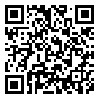Semi-Annual
Back to the articles list |
Back to browse issues page
1- Handicrafts Department, Faculty of Arts, Semnan University, Semnan, Iran
2- , Department of Art Research, Faculty of Arts, Shahed University, Tehran, Iran ,marasy@shahed.ac.ir
2- , Department of Art Research, Faculty of Arts, Shahed University, Tehran, Iran ,
Abstract: (896 Views)
The art of illuminating the Holy Quran in historical periods and Islamic lands exhibits different visual characteristics that can be studied. The characteristics that are common in some cases due to relationships and influences, and in some cases due to localization, have adopted the special characteristics of that region. The illumination of the Safavid period has its characteristics despite the continuity of the traditions. Following the decline of court patronage, also due to the wars and conflicts between the Safavid and Ottoman governments, several artists were transferred to the Ottoman court, and the characteristics of various arts, including illumination by Iranian artists, entered Ottoman illumination. Given that no research has yet been conducted on the characteristics of Safavid and Ottoman period illumination and their mutual relations and there exists a significant gap in knowledge in this field, research on this matter seems necessary. The purpose of this research is to investigate the differences and similarities between Safavid and Ottoman period illumination art and also to elucidate the reasons for the differences and similarities between these two periods. The research questions include: 1- What are the similarities and differences between Ottoman illumination and Safavid illumination? 2- What are the reasons for similarities and differences in Ottoman and Safavid illumination? The comparative research method employed is a set of qualitative methods. The method of gathering information is library and image reading. The findings of the research indicate that as long as Iranian artists were active in the Ottoman court, many features of Safavid and Timurid illumination were introduced to Ottoman illumination and were replicated faithfully. However, after the popularization of nationalism in the Ottoman government, the presence of Iranian artists in the workshops diminished and the influence of Safavid illumination was weak. Abstracts and structures become simple, quiet, and with minimal details.
Send email to the article author
| Rights and permissions | |
 |
This work is licensed under a Creative Commons Attribution-NonCommercial 4.0 International License. |






 tabriziau.ac.ir
tabriziau.ac.ir